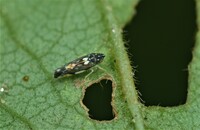|
|
|
|
Species Photo Gallery for Erasmoneura nigra No Common Name 2 |
 | Photo by: Robert Deans
Forsyth Co.
Comment: E. nigra based on hostrnrnhttps://www.inaturalist.org/observations/126367970 |  | Photo by: Robert Deans
Forsyth Co.
Comment: E. nigra based on host; https://www.inaturalist.org/observations/126367970 |
|

 »
»

 »
»